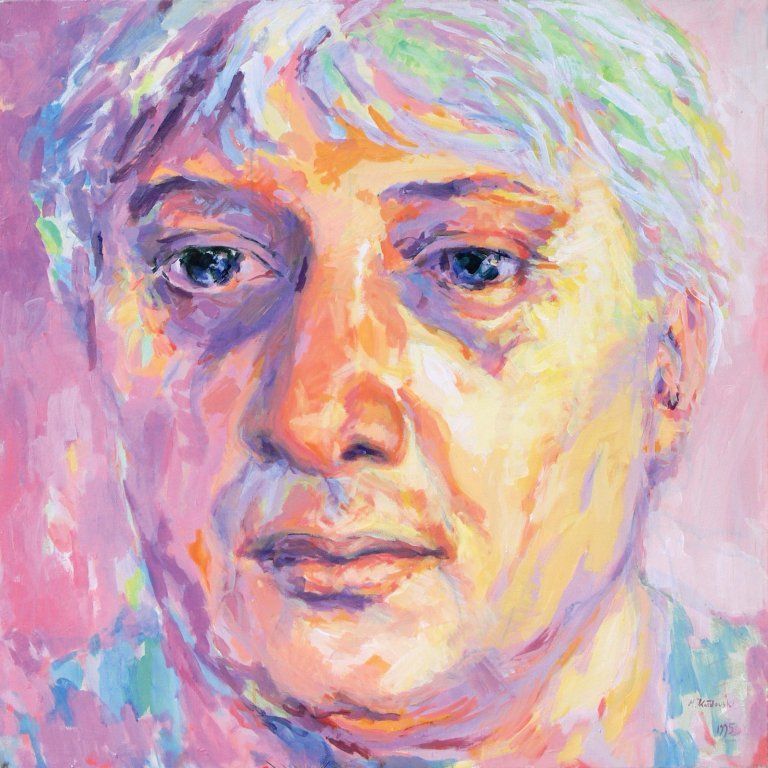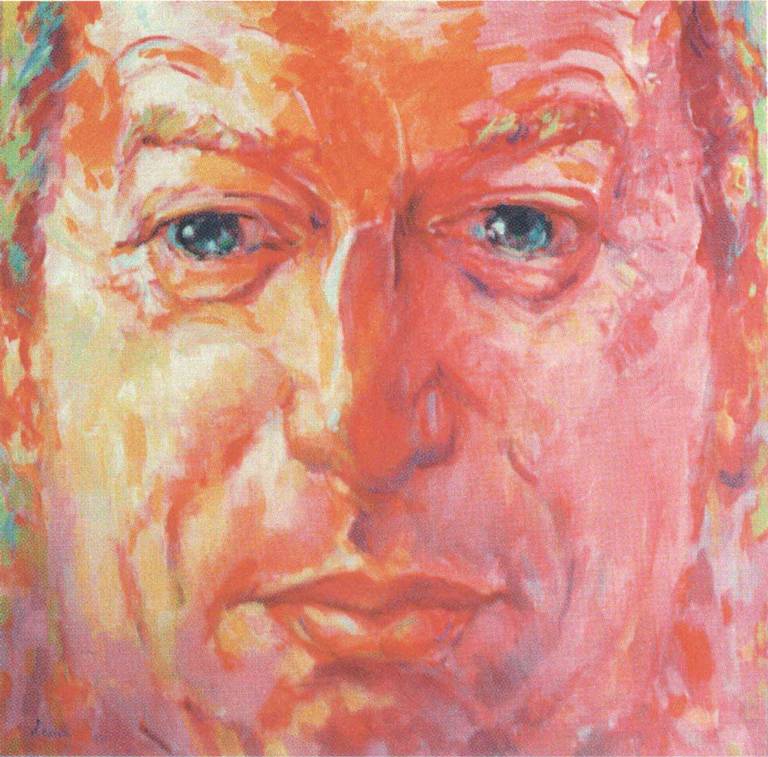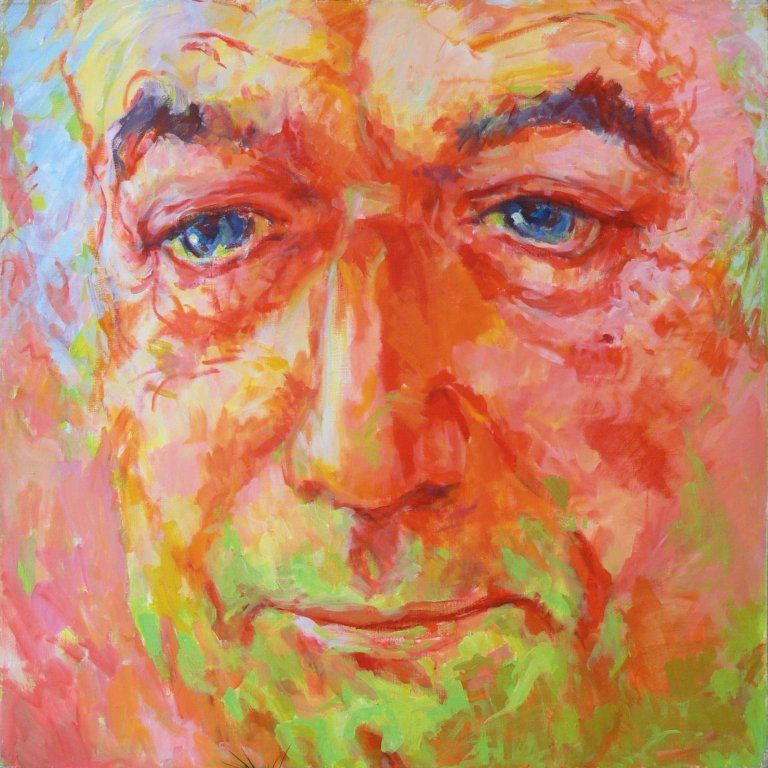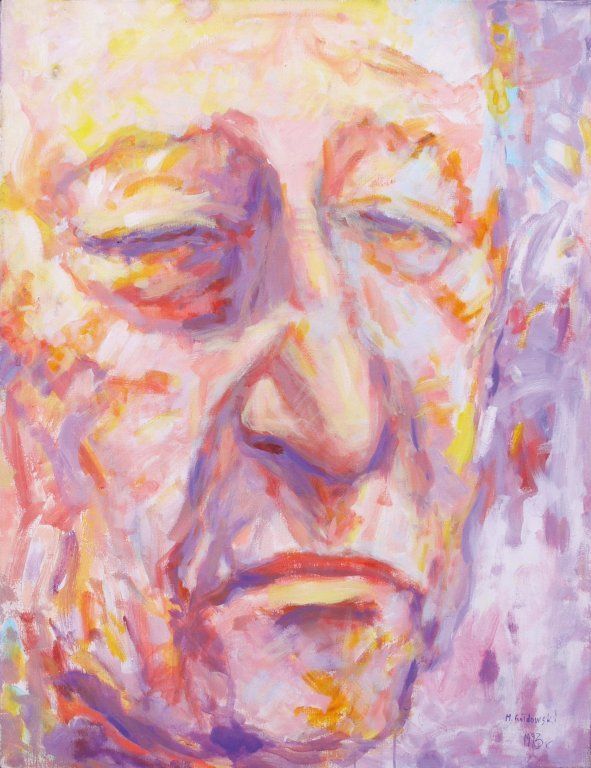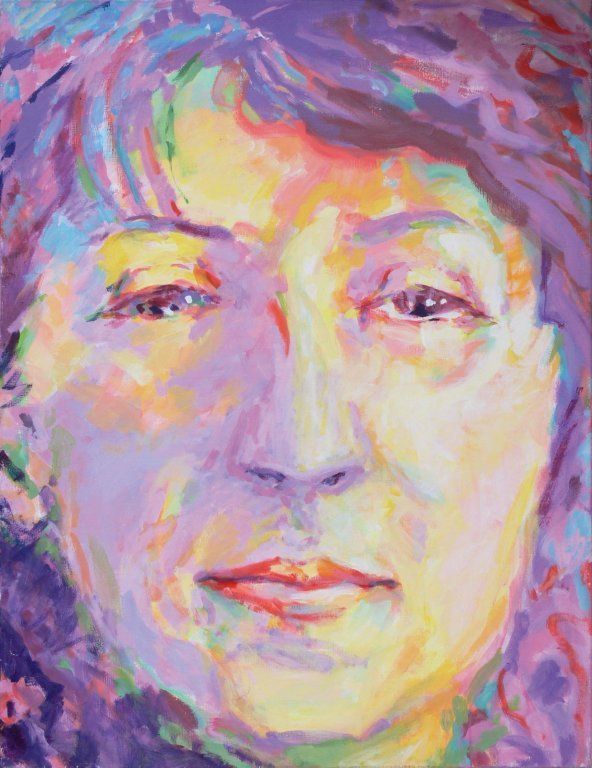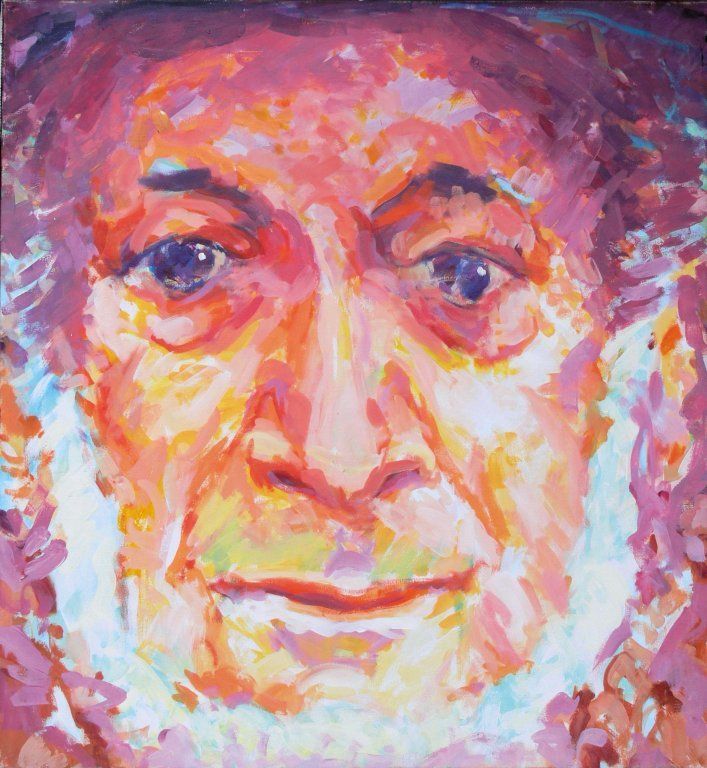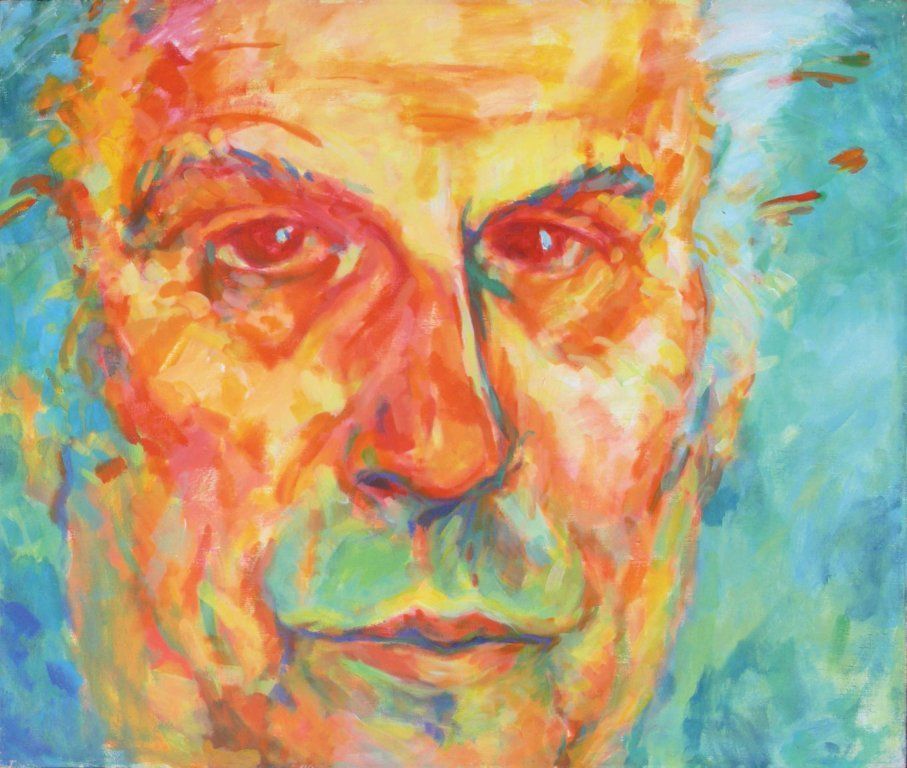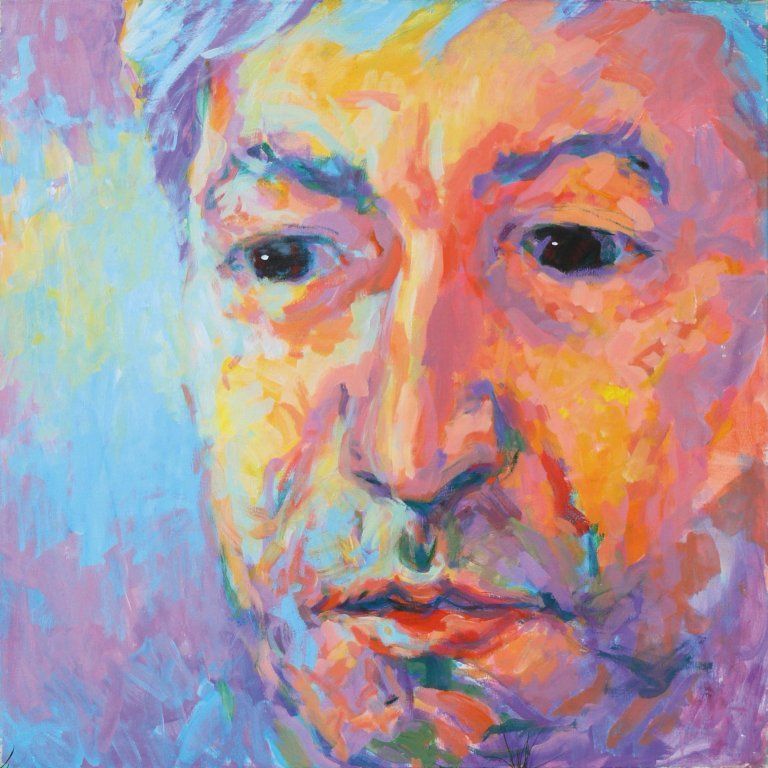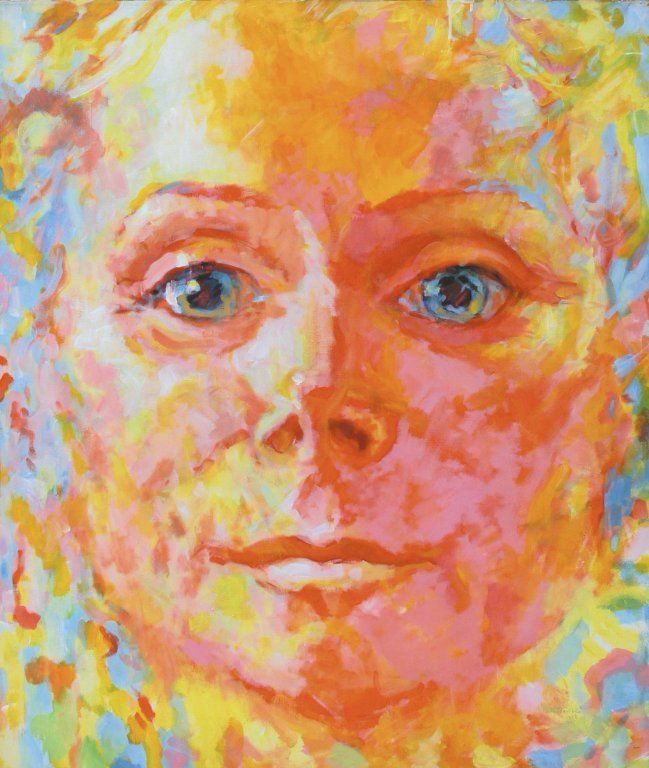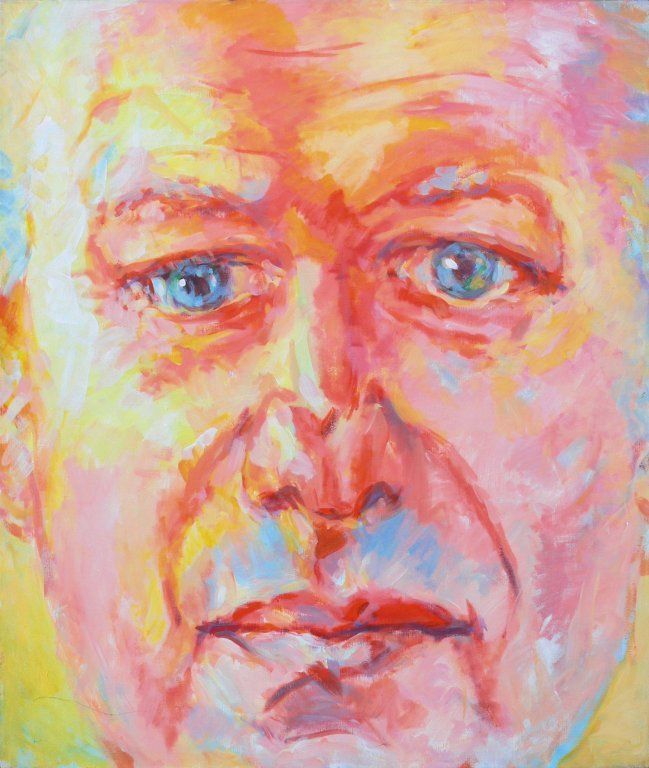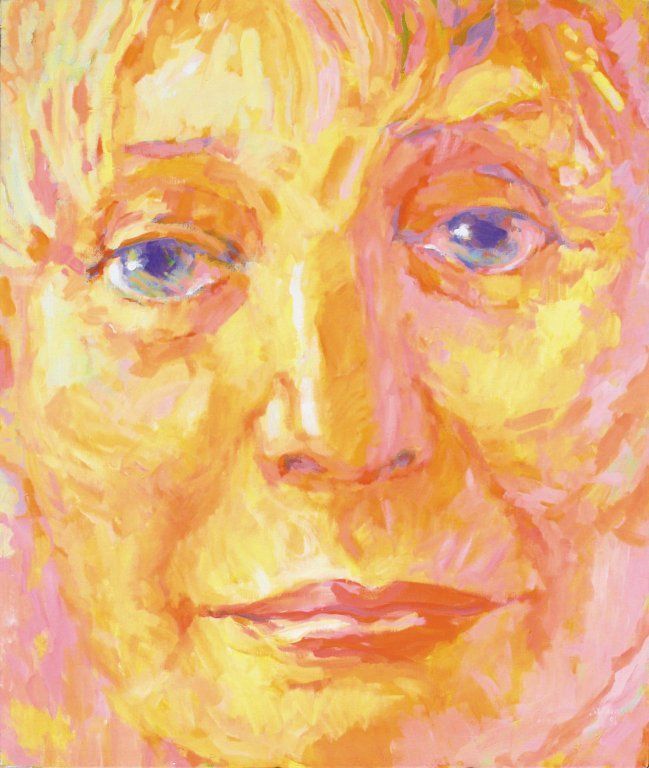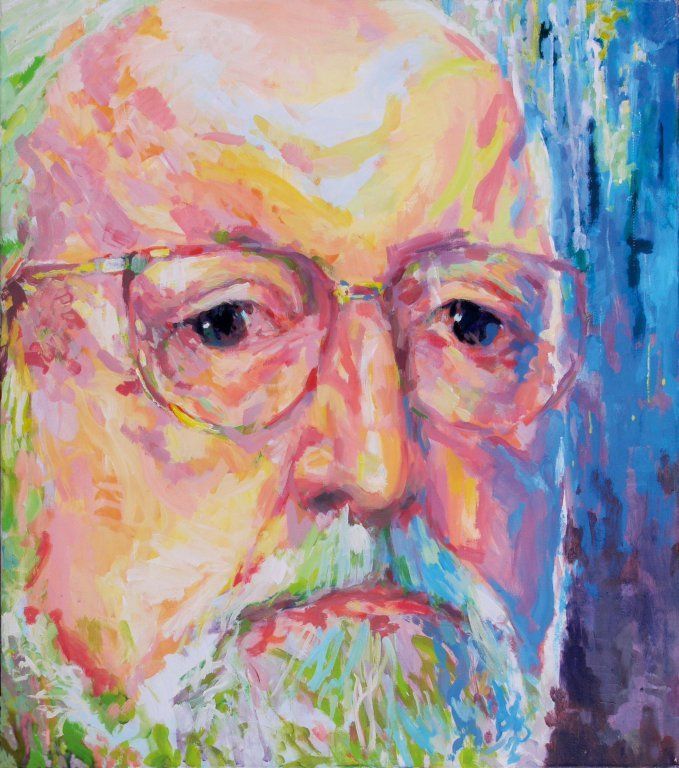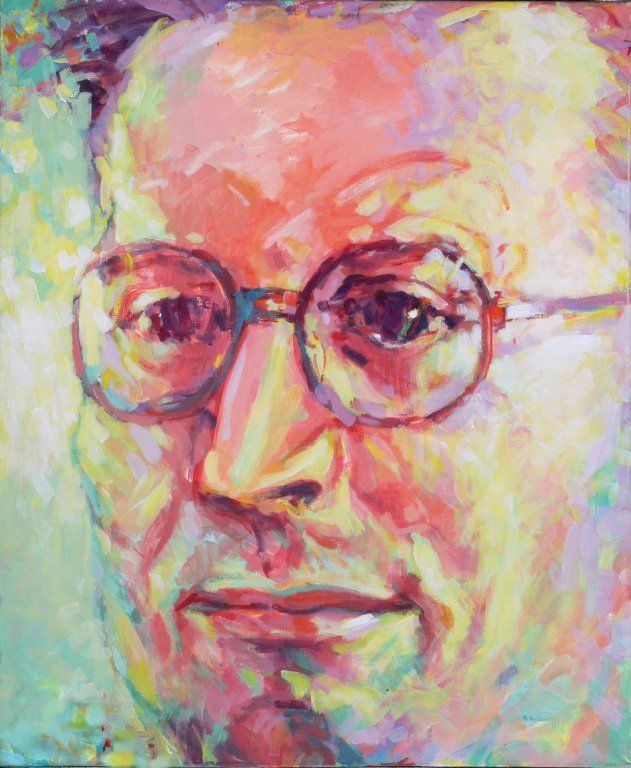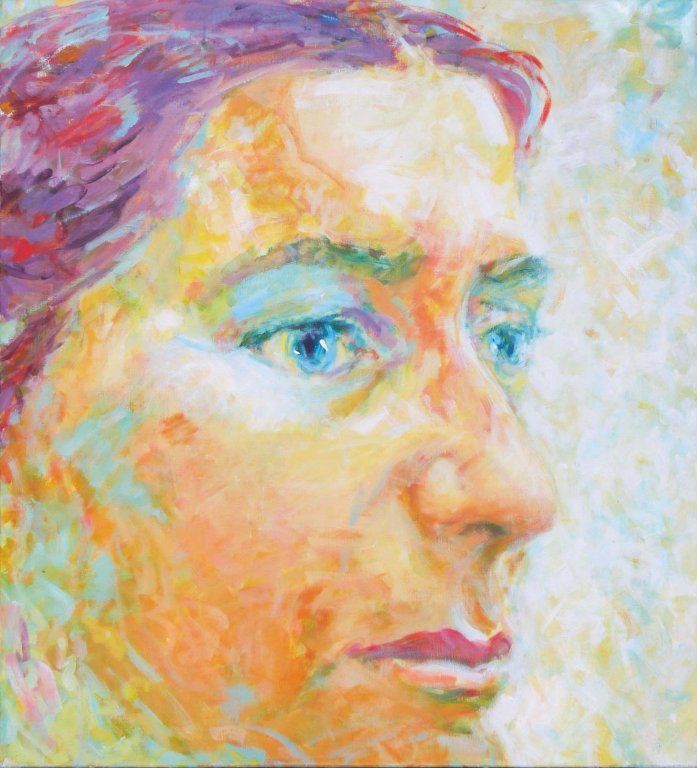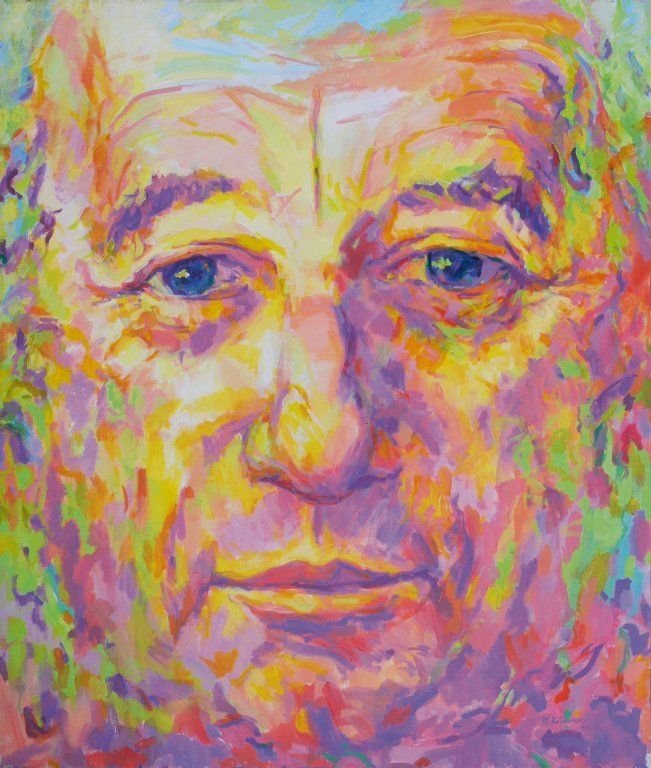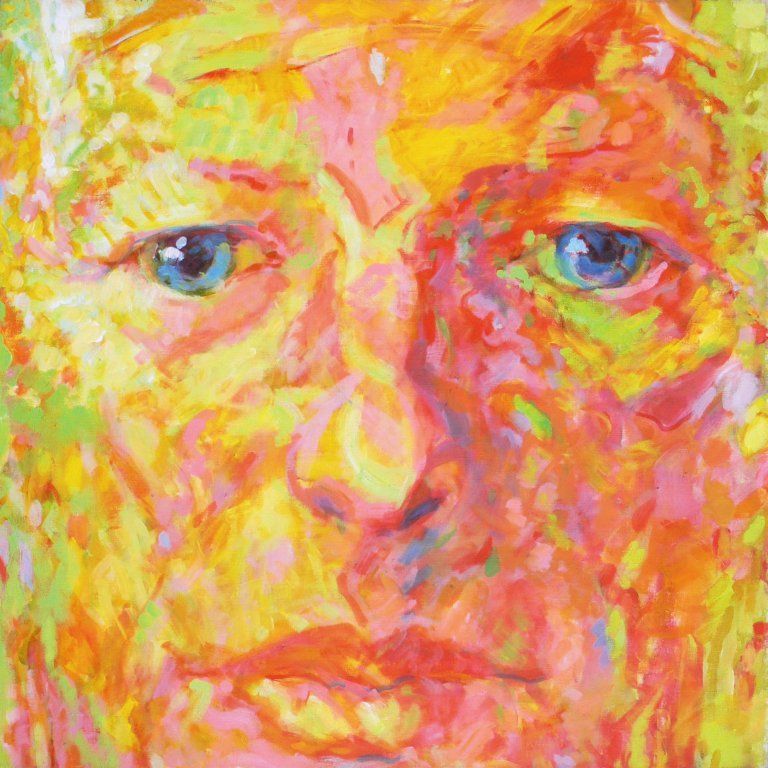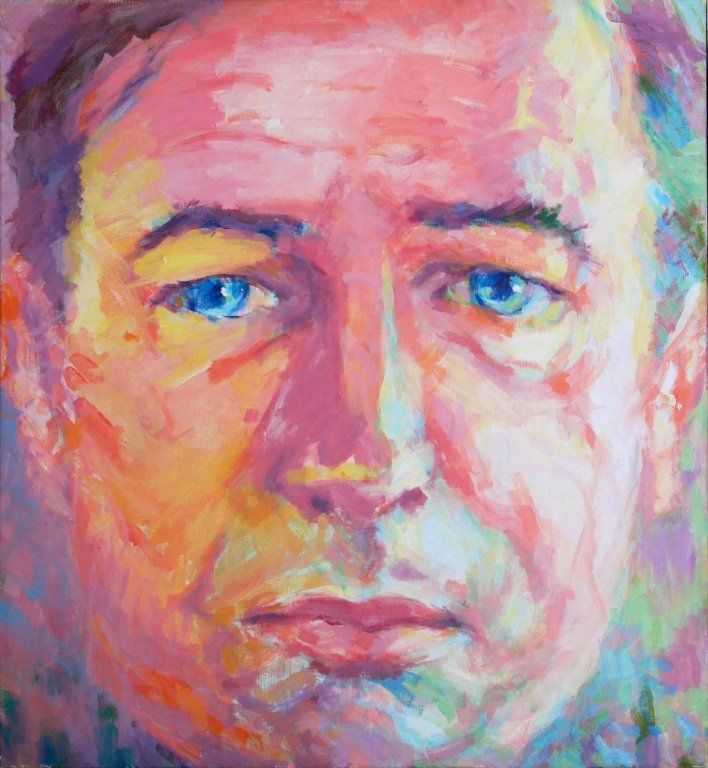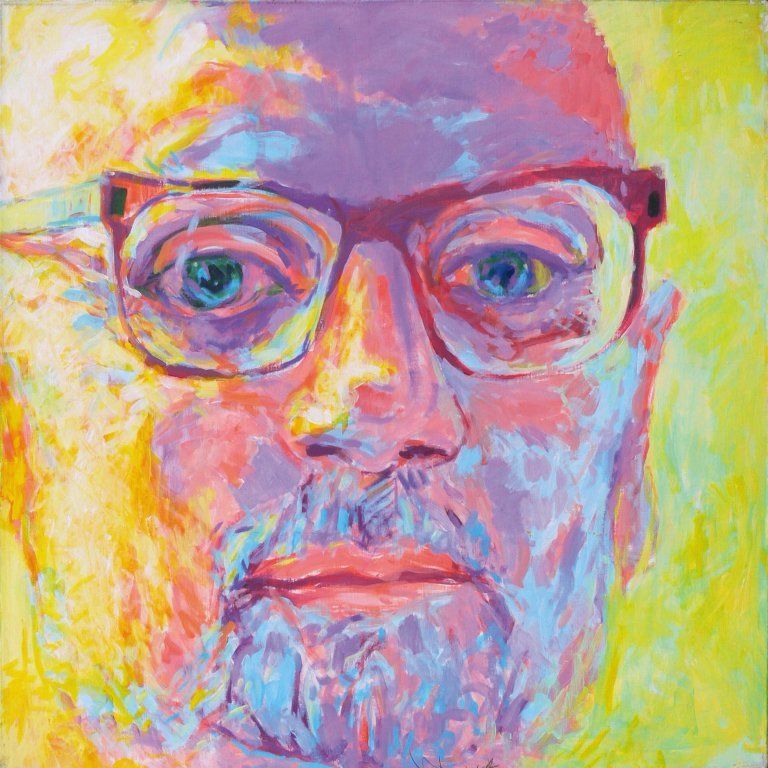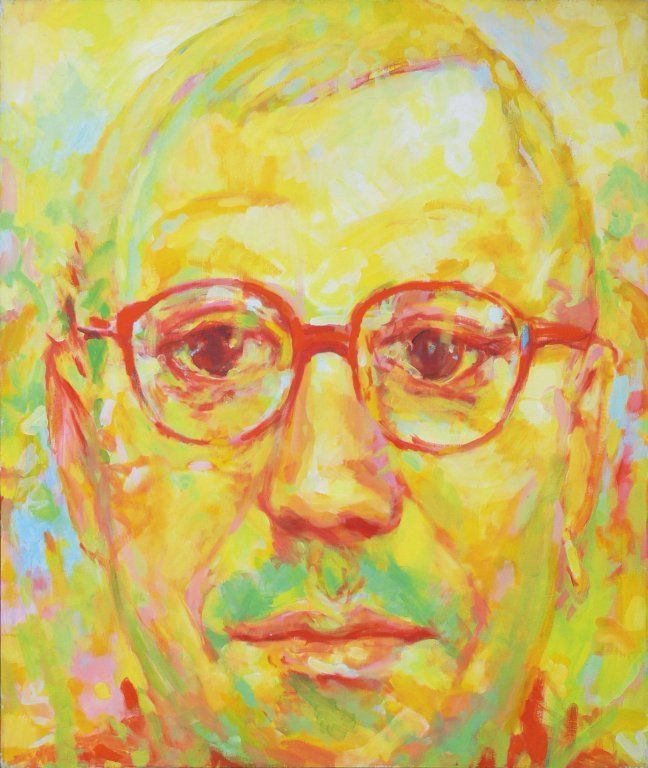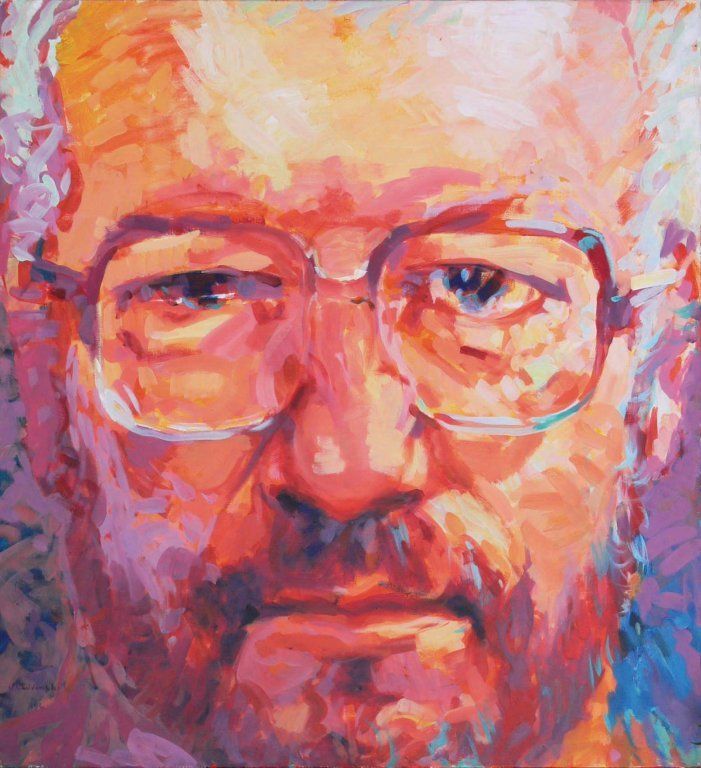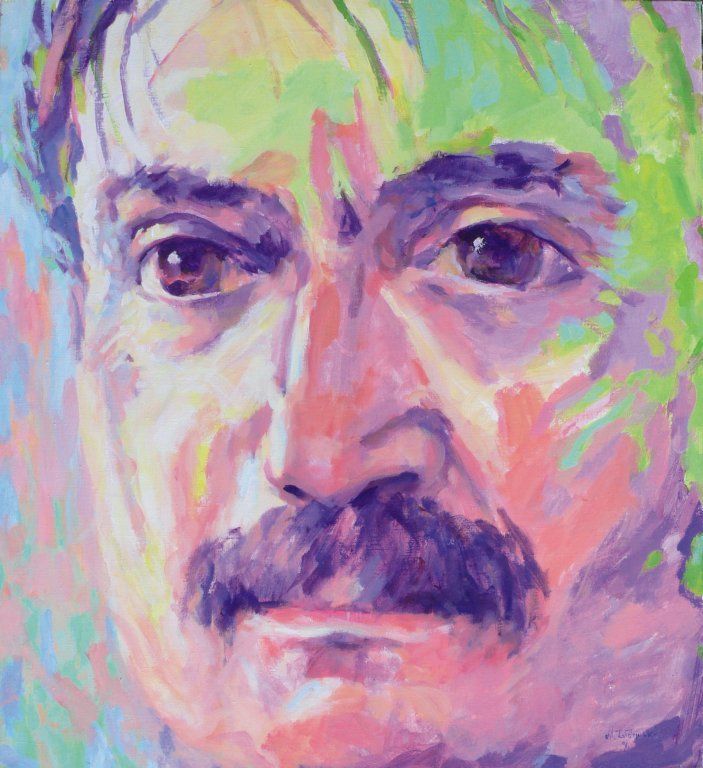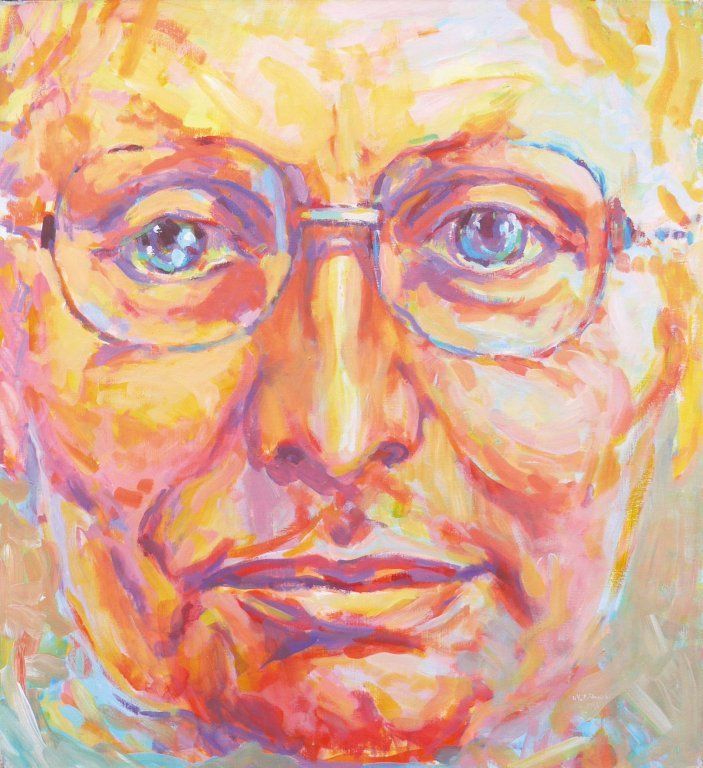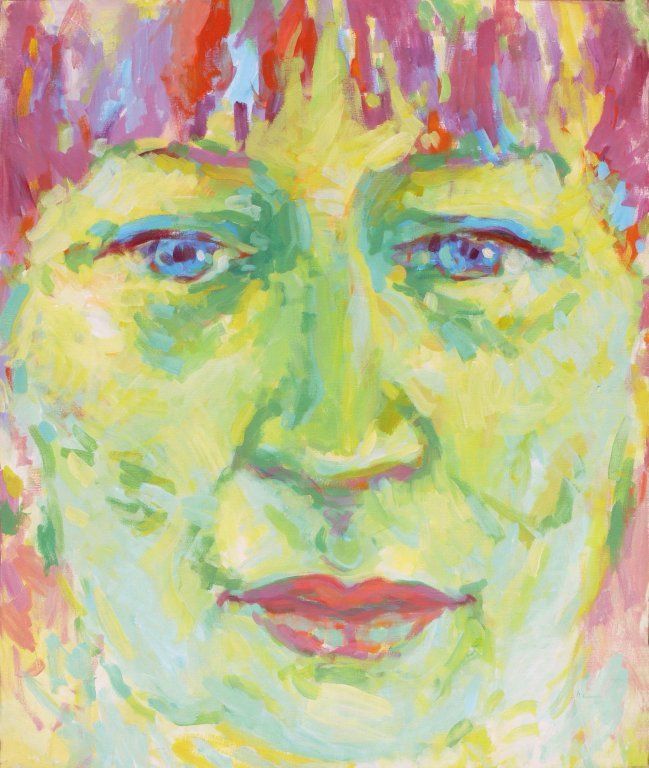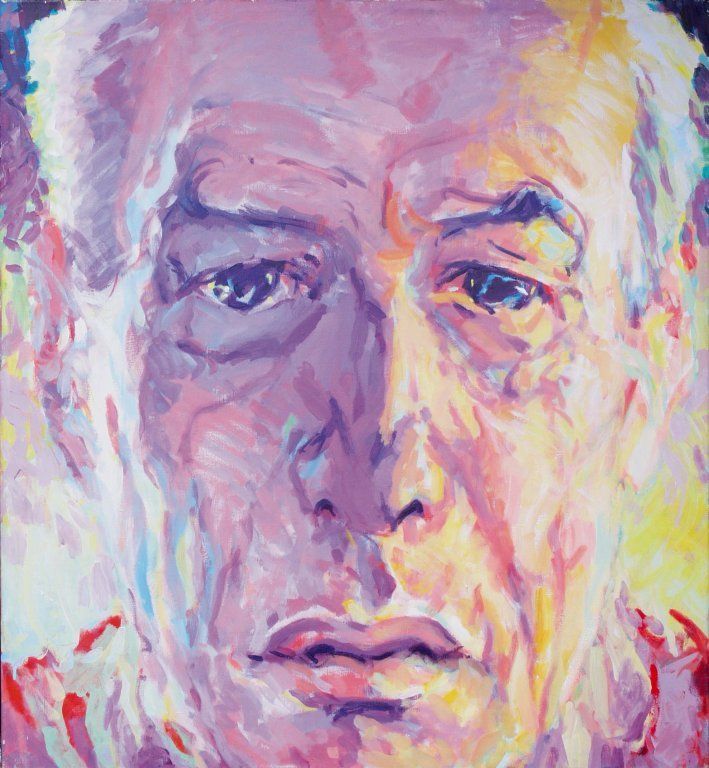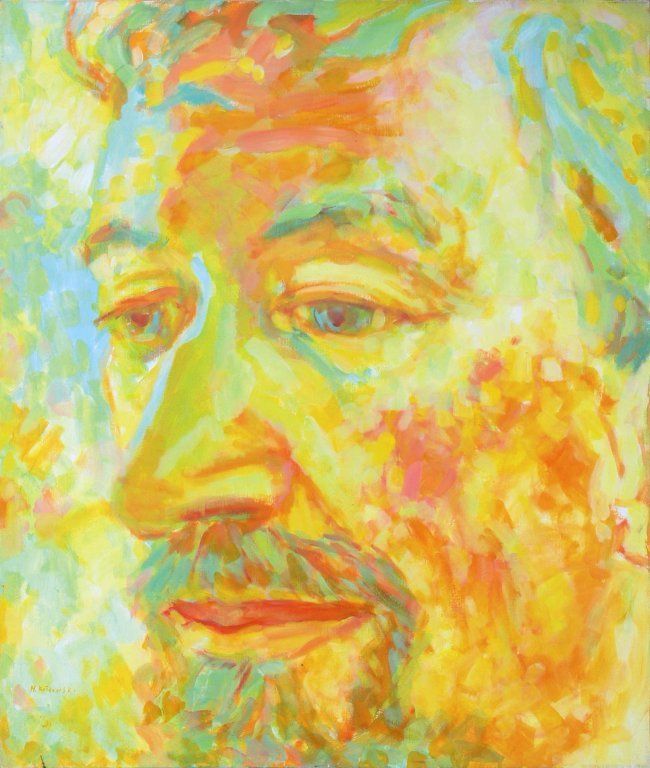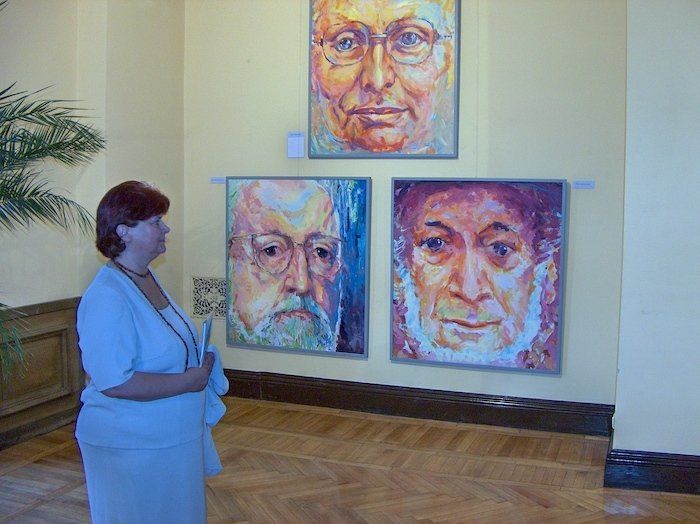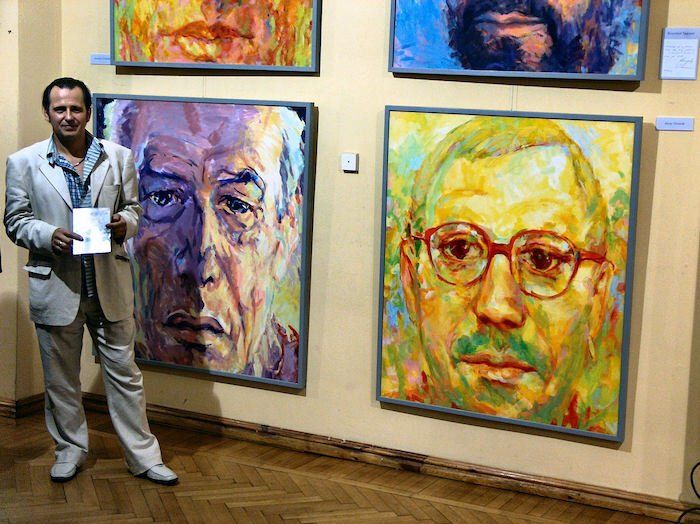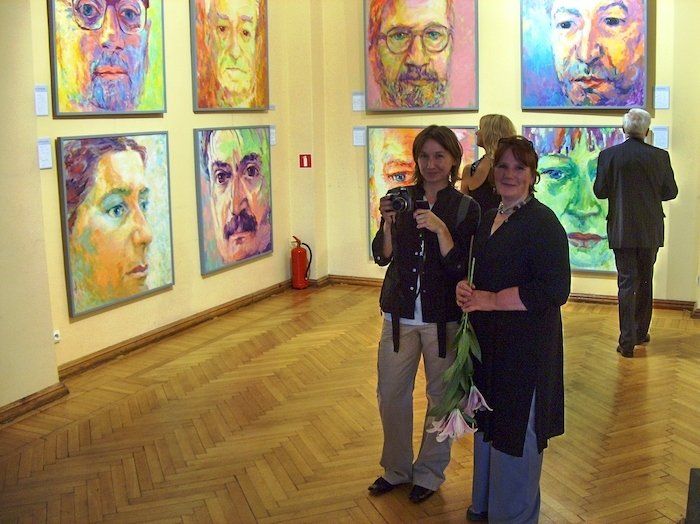MARIUSZ KALDOWSKI - Velis Passis
These large scale portraits were painted between 1993 and 1996. First exhibited in 1996 in Palace of Art in Krakow. The subjects sat for their portraits.
"Kaldowski is a painter of his times — age of an amazing history pace in which one cannot stop but has to go on..." Ryszard Kapuscinski
read more below
-
Button
Zbyslaw Maciejewski
acrylic on canvas 110 x 110cm
-
Button
Jerzy Stuhr
acrylic on canvas 110 x 110cm
-
Button
Zbigniew Religa
acrylic on canvas 110 x 110cm
-
Witold Lutoslawski
ButtonWitold Lutoslawski
acrylic on canvas 130 x 100cm
-
Button
Urszula Dudziak
acrylic on canvas 130 x 100cm
-
Button
Piotr Skrzynecki
acrylic on canvas 130 x 120cm
-
Button
Ryszard Kapuscinski
acrylic on canvas 110 x 130cm
-
Button
Piotr Büchner
acrylic on canvas 110 x 110cm
-
Button
Olga Szwajger
acrylic on canvas 130 x 110cm
-
Button
Mikolaj Melanowicz
acrylic on canvas 130 x 110cm
-
Button
Lucyna Winnicka
acrylic on canvas 130 x 110cm
-
Button
Leszek Dlugosz
acrylic on canvas 110 x 110cm
-
Button
Krzysztof Zanussi
acrylic on canvas 110 x 110cm
-
Button
Krzysztof Penderecki
acrylic on canvas 130 x 115cm
-
Button
Krzesimir Debski
acrylic on canvas 120 x 100cm
-
Button
Kaja Danczowska
acrylic on canvas 110 x 110cm
-
Button
Josef Tischner
acrylic on canvas 130 x 110cm
-
Button
Joahim Grubich
acrylic on canvas 110 x 110cm
-
Button
Jerzy Turowicz
acrylic on canvas 110 x 110cm
-
Button
Jerzy Radziwilowicz
acrylic on canvas 120 x 110cm
-
Button
Jerzy Prokopiuk
acrylic on canvas 110 x 110cm
-
Button
Jurek Owsiak
acrylic on canvas 130 x 110cm
-
Button
Jerzy Nowosielski
acrylic on canvas 120 x 110cm
-
Button
Jan Budziaszek
acrylic on canvas 120 x 110cm
-
Button
Jacek Santorski
acrylic on canvas 110 x 110cm
-
Button
Ewa Letowska
acrylic on canvas 120 x 110cm
-
Button
Agnieszka Duczmal
acrylic on canvas 130 x 110cm
-
Button
Andrzej Szczypiorski
acrylic on canvas 120 x 110cm
-
Button
Franciszek Starowiejski
acrylic on canvas 130 x 120cm
-
Button
Adam Makowicz
acrylic on canvas 130 x 110cm
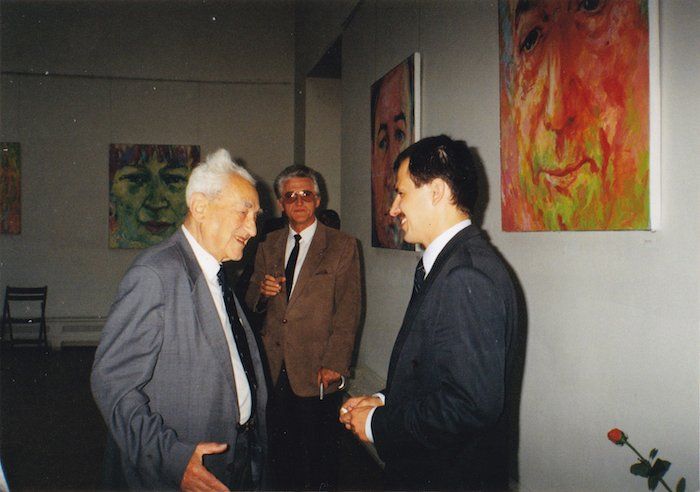
Slide title
Write your caption hereButton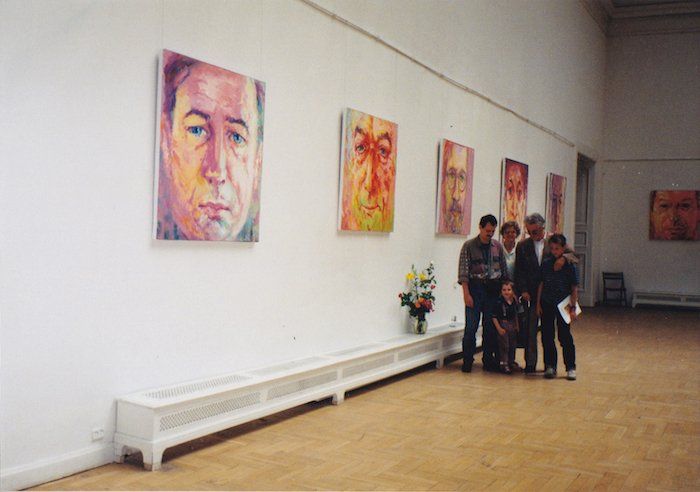
Slide title
Write your caption hereButton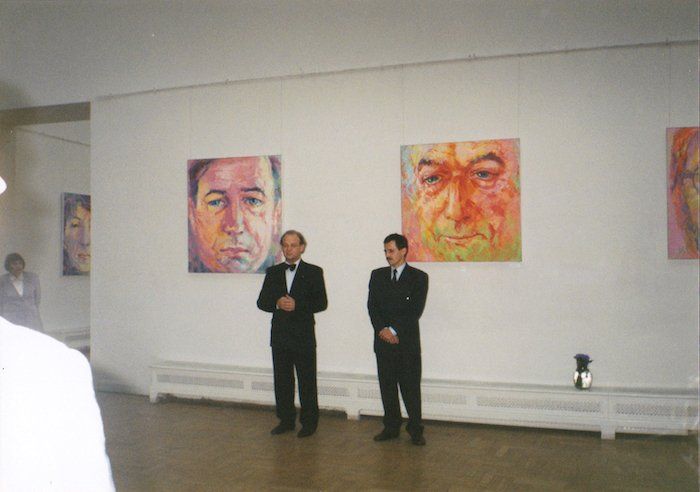
Slide title
Write your caption hereButtonSlide title
Write your caption hereButtonSlide title
Write your caption hereButtonSlide title
Write your caption hereButtonSlide title
Write your caption hereButtonSlide title
Write your caption hereButton
Ryszard Kapuscinski
Mariusz Kaldowski works concentrated. Concentration seems to assume slow activity, moments of hesitation, moments of reflection, necessary breaks, however Mariusz Kaldowski, when we watch him by his easel we are surprised by his fast, almost rapid strokes of the brush, resolute hand movements, certainty with which he uses his paints. There are painters whose vision of the painting appears during the work on it through many strenuous and arduous trials and searching’s. However it seems that Kaldowski creates this vision in his imagination on the canvas. This ability, ability of seeing an image before it appears as a material and artistic piece of art explains to us something so visible in his art which is the colourist unity of his paintings, perfectly grasped balance, harmony and concord of tints.
Easiness and bravery of handling the colour, its richness, its liveliness and a vibrating abundance create a feeling of freshness and charm of his painting. In this impulsive vividness of colours and contours there is no space left for the pedantic smoothing, for the excessive detailed cuts. Kaldowski is a painter of his times — age of an amazing history pace in which one cannot stop but has to go on, always create something new, and this overwhelming time and expectations pressure can also be noticed in his paintings, so charming with their verve, zest and energy.
However in spite of the fact that our age imposes on us such a hurry and almost legitimate negligence and nonchalance, the painter does not surrender and in every painting one can see the importance that he attaches to the form. In Kaldowski's paintings the form means — according to Cezanne's definition — colour. Moving, vibrating, restless colour — the qualities characteristic of intensive and ever-changing life.
There is one more feature of this painting, ever so important, of which the value is hard to estimate in the formal language of modern art critique — meaning its humanity. Kindness and friendliness he directs to the others, a wish to know and understand them. A desire to build his art from the light, the colours of which the tone and temperature support the life. But first of all the art of Mariusz Kaldowski reminds us that man, his face, his personality that is expressed on this face continues to be — in spite of the invasion of all kinds of the abstract forms — always present and immortal theme in the art.
This excellent and original painting is an outstanding manifestation of this truth and that is why it attracts so much interest, approval and liking.
Ryszard Kapuscinski
Inka Dowlasz
The foundations of exhibition reach the depths of mental transformations of its creator — Mariusz decided to face his own limitations in an artistic and psychological way.
He decided to dare to ask for posing the people who had an impact on his spiritual life. He also decided to paint people who — through their life-attitude, brave and successful overcoming the limits of mediocrity — impress him.
Through meeting such individuality the chains of stereotypes of painting technique and portrait composition break. Here, this specific way of manifesting the personality dictates or even imposes the artistic solutions.
However, one should omit everything which is more or less consciously created manner of | dealing with the world and concentrate mainly on the mimic part of the face where the psyche manifests itself in the most direct way.
The paintings are 110 cm x 130 cm big and they show a maximum focus of the face alone which results in kind of a spiritual landscape of the painted person.
One can notice that as the number of portraits grow the collection starts to live own life and acts inspiringly in various directions. There is even an idea to combine this exhibition with a series of public meetings and discussions on the drama of human self-realisation. Inka Dowlasz
Olga Szwajgier
I am looking through the portraits — still unready... That man shrouded in grey mist with no lights, as if he was just about to leave...
And in this look-colour and face-tint lies a sore and aching heart; enchanted pain — did it have to be frozen inside?...
And here — perfect balance, peace, completeness, fullness, beauty...
Mariusz either sees the aura or he receives it intuitively...
In this face one can see the colour of ambition, speed, progress...
And here — bitterness, why? But it'll soon even — this light trail brings hope...
And that face beams with the energy so kind to the world and people... I am posing... Olga Szwajgier
Jerzy Prokopiuk
Light and colours of human faces Light and colours of human faces
,,God created man in the image of himself" Genesis 1: 27
When Mariusz Kaldowski had asked me to ,,lend" him my face to paint its portrait, I asked him — afraid of my soul, what is the criterion of choosing my (and many other people's) face for showing them to possible people who will come see a future exhibition of our portraits. He answered: „I invited such people about whom I think that they have already passed — or are passing — the successful process of individuation" The answer explains why I was assigned of a task of writing foreword to the exhibition's catalogue. I had the great honour of intimate intercourse with thought of the great psychologist Carl Gustav Jung (1875-1961). The idea of individuation itself in the system is of big central and leading importance. What is the individuation process? Jung in his book “Psychological comments for Bar-do Thos-grol" (The Dead's Book of Tibet) has written that the individuation process — the natural analogue of religious initiation ceremonies — is the model developed form of the personality transformation process. The history of religion abounds with examples of various forms of individuation process. We can find them at primitive nations, in occultism, in European and Asiatic magic and alchemy, also in Eastern religions (Taoism, religions of India, Buddhism, Zoroastrianism, ancient mystery religions, Judaism and Islam, and on Christianity (Esoteric Christianity — from Apostle St. John through Gnosticism and Manichaeism, initiative circle of the Holy Grail, Cathab, Templars, Rosaecrucists up to anthroposophy and orthodox, catholic and protestant mystics. Jung's student, Jolande Jacobi, in analysis of various aspects of individuation process — leading to achievement of trans rational recognition of spiritual world — in her book ,,Der Weg zur Individuation" (Zurich 1965) proposed the scheme of its manifold forms:
01 A. Natural process of life run
B. Methodise process of life run
02 A. Individually lived process
B. Initiation on the way of participation in collective process
03 A. Progressive process
B. Sudden transformation
04 A. Permanent evolution
B. Cyclical process
05 A. Partly achieved process (initiation into life)
B. Fully achieved process (initiation into life and into death)
06 A. Prematurely broken process
B. Underdeveloped process
C. Pathological process
One may say using the dung's terms, that the individuation process in strictly Jung's meaning — is partly synonymous to “natural transformation” and partly to technically caused transformation — (in both cases leading to “enriched personality”).
The individuation process in its cultural phase (5B) — initiation into internal reality, needs fully conscious engagement of man. The condition of entering this phase is often mid-life crisis — realisation of conscious aspect of psyche (dominating type and psychological function and understanding the apparent character of person). Signpost and milestones of individuation process (as the path leading to ego i.e. centre of consciousness, self, the psyche upper steering centre) are: integration of ,,shadow", differentiation of anima or animus and dethronisation of ego through such archetypal structures as the Old Sage and the Great Mother (of course there is no place for exact description of that phase of personal development; it in better to look into Jung's and his students works).
The aim of individuation is the synthesis of the conscious and the unconscious aspects of psyche. The archetype picture joining both aspects is called ,,self by Jung. According to Jung, the self exists a priori and ego emerges from it.
The birth of self means displacement of hitherto existing centre of human psyche, the full transformations of personality. In this process man has to put himself out for unconscious psyche impulses without identifying with them (danger of ego sinking) and without escaping them (danger of ego fossilisation). The birth of self means the widening of ego narrow borders . This way arises the new consciousness, which participates in extensive universe of objective spirit — transcendental and immanent one.
Jung in his book ,,Das Geheimnis der Goldenen Blute" (Munchen 1929) wrote: ,,If it be possible to make self the new individual gravity centre, it will rise the new personality suffering only on its lower levels, but on upper ones detached in a very special way from painful and joyful events". Self is unrecognisable and indefinable ,,transcendental postulate". But self is within the range of internal experience and it is also an ethic postulate as an aim. That's why it’s undoubtful analogy for the idea of God's Kingdom inside us, or Master Eckhart's “soul spark”.
The individuation process understood that way is the process of enlightenment, but it does not mean ,,solution" of life problems, but their surpassing.
,,What on lower levels of personality was giving the opportunity for the wildest conflicts and panic affects, that now, watched from upper level of personality seems like storm in the valley watched from the high mountain. It does not mean that storm lost its reality, but you are not within it anymore, but over it." (Jung ,,Das Geheimnis der Goldenen Blute")
Have these 30 persons — theologians, philosophers, painters, musicians, writers, translators, social workers, lawyers, journalists, editors, cinematographers, psychologists and physicians — painted by Mariusz Kaldowski passed successively the individuation process elaborated above?
We are not able and we have no right to consider — without their permission — this problem in very ultimate range or context of individuation process in precisely Jung's sense.
But we can suppose in principle that painted creators are passing the individuation process in it is wider meaning. Their biographies, their ascents and descents — and ascents again — testify to that.
Their works, the essence of acquired possessions testifies that this process is going successfully.
But every sceptic living within us could say that on the pictures we can see only their faces, not their biographies or their works. Is it true? To answer that question first we must ask what the man face is?
Let's look again at our motto: ,,God created man in the image of himself. What does it mean?
In my opinion, creating man in the image of God means that he is our source, prototype and model and also that by giving birth to us as to spiritual beings he gave us his nature. Creating us in the image of Himself means that His image contains itself inside us, in every one of us — as the Son of God. According to Christian-esoteric point of view, the Holy Trinity — as the Father, Son and the Holy Spirit — contains itself in every human, penetrates him in his spirit (spirit-self, spirit-life, spirit-human) and also in his soul (sensational, intellectual, self-conscious or — in a different perspective — in thinking, feeling and willing) and body (brain and nerves, rhythmic and metabolic system and also muscles).This idea was precised by anthroposophy author Rudolf Steiner (1861—1925) in his work ,,Von Seelenratseln" (1917).
My esoteric imagination prompts me now that this divine image, the prototype-archetype of our being is the God's light, the transcendental aspect of deity — as the Unity and likeness, existing inside us is God's colours spectrum, the immanent aspect of deity — as the Magnitude.
Imagination as the power of human soul is not the creator of illusion — it is the creative force. It is not only the subjective activity — it creates realities in the astral world. I remind that, because I had such ,,fantastic" (or imaginative) experience between April and May 1973 in Wilcza Poreba near Karpacz. If I can write something personal, these days I could convince myself about reality of spiritual light and spiritual colours, permeated with the ecstatic joy.
These pictures — portraits of 30 authors — show us the lightness and colours living in their faces. Everyone can see it, this deduction is banal, even vulgar.
But people who see these portraits notice that faces surely have their ,,shadows", their ordinaries, that these are faces of ,,fallen people" (using the religious vocabulary). They are faces of persons who know the descents of themselves, faces sometimes dark, sometimes ugly, sometimes bad. They are only human facts, that's our reality. But it is the false reality.
Portraits painted by Mariusz Kaldowski apparently are so "ideal", embellished, noble. I agree but what does it mean that something is idealised? Does it mean it is ,,unreal"? What if the ideal is real? If so, it means the author , showing something as ,,idealised" shows such aspects, which blind ,,realists" are not able to see.
That's what Mariusz Kaldowski does.
His portraits show the ideal faces of people, they show — in their colourfulness — the similarity connecting man and God, the spiritual and divine substance within human.
But at the same time, in the penetrating light, they expose the ,,image" of God, the parental prototype of man because when they become the matter of meditation, give access to Divine Light itself.
That's why I do not hesitate to call them icons, the modern icons revealing Immanent Divinity that lives within human, and as well — by human, by his face — revealing perspective for Lumen Dei and giving us access to him. If Christ as the intermediary on the way to God-Father-and-Mother stayed in every human and if this way leads only through Him it means that every man is an icon, every man has heaven inside himself. ,,The Kingdom of God is inside us and between us".
Statistically, man essentially seems to have ,,two souls — eternally unharnessed and confused", as Goethe in ,,Faust" says. Two souls: the dark and fallen and the light icon-soul, the Spark of the spirit.
However, if we consider the problem in the aspect of time, i.e. dynamically, we have to — according to Goethe's teaching about light and colour — look at our both souls in their relationship, in their history. Man, as the spiritual being, has his history: the involution phase (,,decline") and the evolution phase (,,salvation"), phase of going away from his prototype and the phase of coming back through the salutary act of Christ. (Goethe calls colours deeds and sufferings of light in its fight against the darkness.) God's light acts and suffers in man in the fight with darkness of Triple Demon: Lucifer, Arymen and Asur. Christ — the Son of God and of the man — acts and suffers within every one of us, people, waiting us from descent and giving us salvation. It means that we, the people, brothers and friends of Christ, should be active participants, collaborators" of God in action and suffering of salutary fight of God's Son — the Son of Man.
The painter can show man both in his descent, and in his sotery — the salvation process. Man can be shown also only in his descent or only in salutary ascent (God's paradox wants us to present his salvation — by showing only one part of human action). Man is always the witness of light's stories in its fight against darkness, the stories of ,,men-colours".
Mariusz Kaldowski in his portraits of chosen group of people shows them in evolutional phase of individuation process — passing from ,,resemblance" into ,,image", from ,,colour" into ,,light". They are faces of people matured — in different ways — as personalities and matured in their works. (In different ways — because the way from darkness into light leads through different colours, it is always individual and there is no pattern — religious or artistic, philosophical, scientific or whatever). The painter is the witness, ascertaining the status quo, but also — by his work — proving that he is — in spite of his age — a real companion of people he paints. And moreover — putting his models achievements in front of them, he can also be a kind of hierophantic, a real pontiff — the one who helps to pass from darkness into light — so they could in some future life bring the received light back to colours of their future incarnations. That is how the real artist — as witness, companion and guide becomes the God's servant within man. He had become it for those of us he had chosen.
Thank you, Mariusz!
Jerzy Prokopiuk

